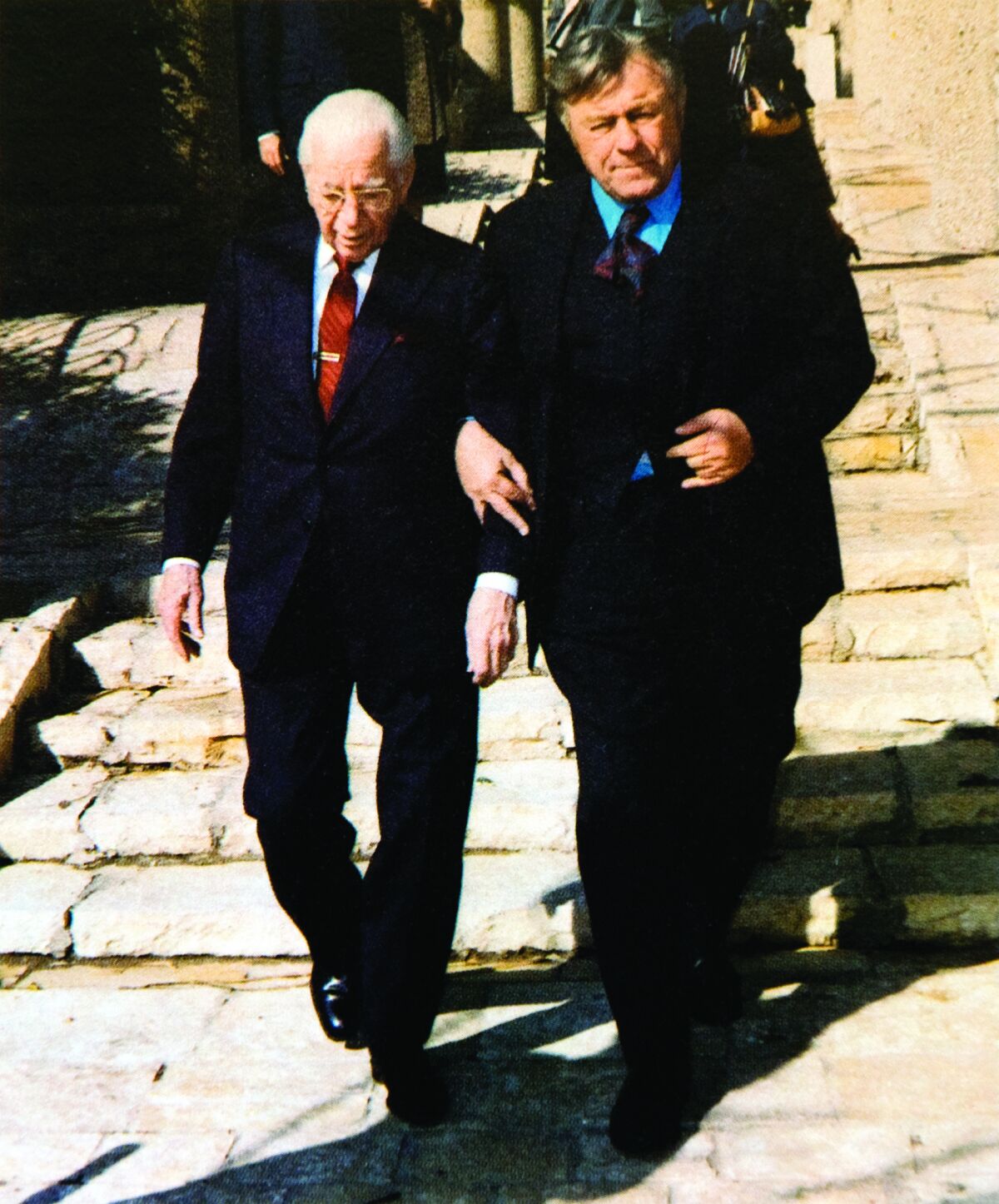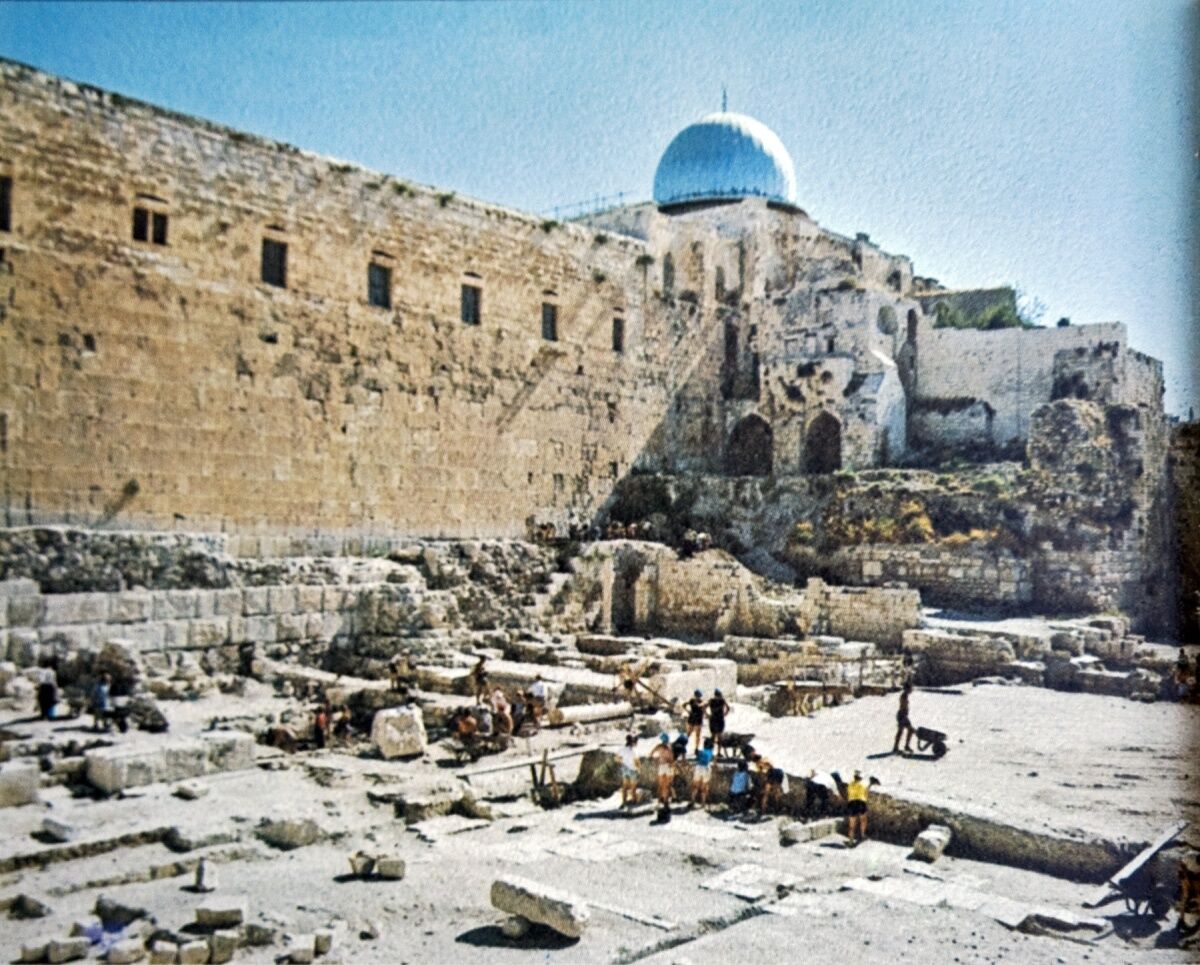The Armstrong Institute of Biblical Archaeology (aiba) and student volunteers from Herbert W. Armstrong College (AC) have supported Dr. Eilat Mazar and Hebrew University since 2006 in excavations in the City of David and on the Ophel.
Following the death of Dr. Mazar in May 2021, aiba and AC have continued the archaeological legacy of Eilat on the Ophel and in the City of David by working in partnership with Prof. Yosef Garfinkel and Hebrew University. aiba also works closely with the City of David Foundation, the Israel Antiquities Authority, and some of Israel’s best archaeologists.
Yet our legacy with biblical archaeology and excavations in Israel goes back more than 50 years, to November 1968. The institute picked up the mantle of the Ambassador International Cultural Foundation, an organization founded in March 1975 by the late humanitarian and religious leader Herbert W. Armstrong.

Under Mr. Armstrong the Ambassador Foundation supported academic and humanitarian ventures all over the world, including Vietnam, Sri Lanka, Jordan and Japan. As a devoted student and teacher of the Bible, Mr. Armstrong cherished both the remarkable history and the glorious future of Jerusalem. Between 1967 and 1986, the year he died, Mr. Armstrong visited Israel more than 50 times, befriending some of the nation’s top leaders, most especially Jerusalem’s mayor, Teddy Kollek.
Following Israel’s victory in the 1967 war, Prof. Benjamin Mazar (Dr. Eilat Mazar’s grandfather) was put in charge of Hebrew University’s massive new archeological dig on the Ophel, situated adjacent south of the Temple Mount. In the fall of 1968, Mr. Armstrong flew to Israel to meet with Professor Mazar and inspect the dig site. He was impressed by the scope and importance of the excavation and formed an immediate connection with Professor Mazar.
Soon afterward, Professor Mazar and Prof. Joseph Aviram, late president of the Israel Exploration Society, accepted Mr. Armstrong’s invitation to visit the Ambassador College students in California. By now, the leaders of the excavation and Ambassador College had developed mutual trust and a friendship that would continue for decades to come. Though the archaeologists had turned down three other major American universities seeking involvement in their project, they now offered Ambassador College a 50-50 joint participation.
On Dec. 1, 1968, the partnership between Herbert W. Armstrong and Professor Mazar to excavate the Temple Mount was formalized at the presidential palace in Jerusalem. At this meeting, Tourism Minister Moshe Kol proposed “an iron bridge” between Hebrew University and Ambassador College “that can never be broken.”

The next year, over 70 Ambassador students spent their summer excavating the Ophel with their Israeli counterparts. The “Big Dig,” as it became known, would continue for a decade, and hundreds of Ambassador students would have the opportunity to touch those ancient stones.
In addition to sending over what were praised as the excavation’s most enthusiastic laborers, Ambassador College shouldered half of the cost of excavations alongside Hebrew University from 1968 until the conclusion of the dig in 1976.
Today, this wonderful iron-bridge partnership is continued through Hebrew University, the Armstrong Institute of Biblical Archaeology and Herbert W. Armstrong College.
